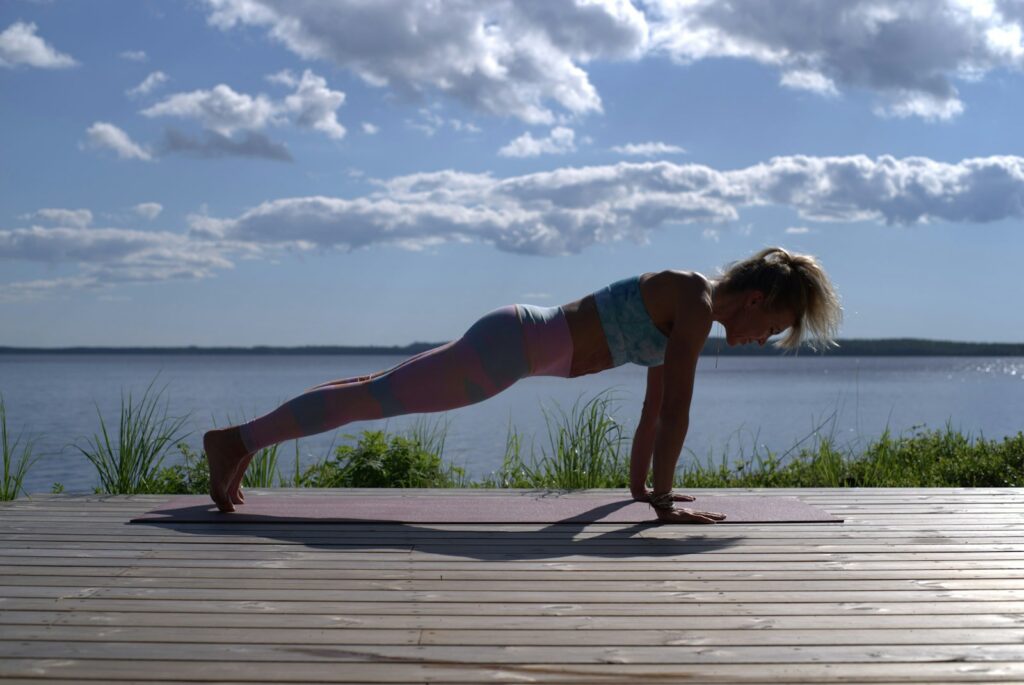
Why Core and Bladder Health Matters
Core and bladder health exercises are essential for improving posture, strengthening muscles, and preventing issues like incontinence, lower back pain, and pelvic discomfort. A strong core not only enhances stability but also supports the bladder and other pelvic organs, reducing the risk of leaks and discomfort.
Many people overlook the importance of core and bladder strengthening, but with the right exercises, you can improve your quality of life, enhance physical performance, and prevent common health concerns.
In this guide, we’ll explore better ways to strengthen your core and improve bladder control, giving you simple, effective exercises to support everyday wellness.
Understanding the Connection Between Core and Bladder Health
The core and pelvic floor muscles work together to provide stability and control for everyday movements. Weakness in these areas can lead to discomfort, bladder leaks, and poor posture. Strengthening these muscles can:
- Improve bladder control and reduce incontinence.
- Enhance core strength for better balance and posture.
- Reduce lower back pain by stabilizing the spine.
- Prevent pelvic discomfort and improve flexibility.
By understanding how these muscle groups interact, you can train your body to function more efficiently and prevent common health issues.
The Best Core and Bladder Health Exercises
1. Kegel Exercises for Bladder Control
Kegel exercises are one of the most effective ways to strengthen the pelvic floor and improve bladder control.
How to Do Kegels:
- Identify the correct muscles by stopping your urine midstream.
- Contract these muscles and hold for 5 seconds, then relax.
- Repeat 10–15 times, gradually increasing duration.
Tip: Perform Kegels daily for better bladder health and muscle tone.
2. Bridge Pose for Core and Pelvic Strength
This exercise engages the glutes, lower back, and pelvic floor, strengthening your entire core.
How to Do a Bridge Pose:
- Lie on your back with your knees bent and feet flat.
- Lift your hips, squeezing your glutes and engaging your core.
- Hold for a few seconds, then lower slowly.
- Repeat 10–15 times.
Tip: Adding a resistance band can provide better muscle activation.
3. Deep Abdominal Breathing for Core Control
Breathing exercises help engage the deep core muscles that support posture and bladder function.
How to Practice Deep Breathing:
- Sit comfortably with your spine straight.
- Inhale deeply, expanding your belly.
- Exhale slowly while engaging your lower abdomen.
- Repeat for 5 minutes daily.
Tip: This technique reduces stress and supports bladder control naturally.
4. Squats for Lower Body and Pelvic Support
Squats strengthen the legs, glutes, and pelvic muscles, promoting better balance and bladder function.
How to Do a Proper Squat:
- Stand with feet shoulder-width apart.
- Lower yourself as if sitting in a chair, keeping your core engaged.
- Push back up through your heels.
- Repeat 10–15 times.
Tip: Holding a light weight improves muscle endurance and stability.
How Lifestyle Habits Affect Core and Bladder Health
Exercise is crucial, but daily habits also play a major role in maintaining core and bladder function.
1. Hydration for Bladder Function
- Drink 6–8 glasses of water daily to flush toxins and support bladder health.
- Avoid excessive caffeine and alcohol, which can irritate the bladder.
2. Posture Awareness for Core Strength
- Sit and stand with a neutral spine to engage core muscles naturally.
- Avoid slouching, which weakens the abdominal and pelvic muscles.
3. Maintaining a Healthy Weight
- Excess weight puts pressure on the bladder and core muscles, leading to strain.
- A balanced diet supports muscle function and bladder health.
4. Avoiding Heavy Lifting Without Core Engagement
- Always engage your abdominal muscles before lifting to protect the lower back and bladder.
These simple changes can enhance the benefits of your exercise routine and promote better long-term bladder and core health.
Common Myths About Bladder and Core Health
Myth #1: Only Women Need to Strengthen Their Pelvic Floor
Reality: Men also benefit from core and bladder health exercises, improving posture, athletic performance, and bladder control.
Myth #2: Bladder Leaks Are a Normal Part of Aging
Reality: While common, incontinence is not inevitable. Strengthening the pelvic floor can prevent and reduce symptoms.
Myth #3: You Should Hold Your Breath During Core Exercises
Reality: Breathing properly during workouts engages the deep core muscles and enhances strength.
By understanding these myths, you can adopt a more effective approach to core and bladder health.
Final Thoughts on Core and Bladder Health Exercises
Taking care of your core and bladder health is essential for overall strength, confidence, and well-being. With the right exercises, lifestyle adjustments, and consistent practice, you can build a stronger core, improve bladder control, and enhance daily mobility.
By incorporating these strategies into your routine, you’ll experience better muscle support, improved posture, and greater confidence in your body’s performance. Start today, and take control of your core and bladder health for a stronger, healthier future.
